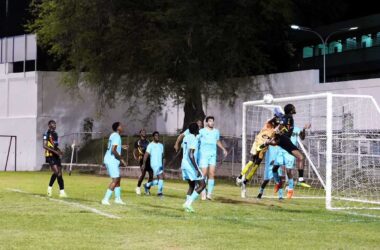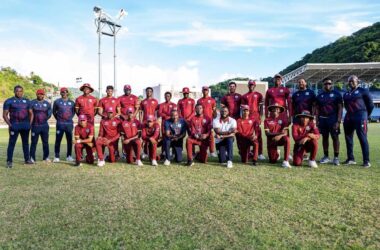
PRACTICALLY every cricket nation has had its highs and lows in the sport. England was a force between the 1950s and early 1960s. Australia ruled the roost for much of 1960s through to the mid-1970s. West Indies under captains Lloyd, Richards—and to a lesser extent Richardson —enjoyed the longest period of dominance from the mid-1970s until the early 1990s. In the 1980s West Indies won 11 consecutive Tests victories and did not suffer a single defeat in 27 Tests. The highlights of that dominance included: two “black washes” of England; series wins on all continents; and World Cup wins in 1975 and 1979.
Some Reasons for our Success
This dominance was undergirded by three key factors. First, there was a solid foundation of cricket nationally and regionally, with competitions at school, inter-school, club, inter-club, and inter-regional levels. This structure ensured a steady influx of talent into the Test team. Indeed, such was the quality of that talent pool, that WI had at least two high quality reserve teams at its disposal that could have easily and successfully competed at Test level.
The second key contributor to WI’s success was the participation of its players in English County Cricket, which gave them access to high class coaching and playing facilities. Equally importantly, it gave them a livelihood outside of Test cricket. That exposure was drastically curtailed when England’s Test and County Cricket Board (TCCB) decided to restrict the number of overseas players in county cricket. The WICB had no effective policy response.
Thirdly, there is the Kerry Packer effect. It is debatable whether West Indies would have reached the summit of world cricket and remained there for as long as it did, if Kerry Packer and his World Series Cricket (WSC) had not entered the picture in 1977, about a year after West Indies were annihilated 5-1 by Australia. During the Packer years, the players’ earnings improved and perhaps most crucially, they were exposed to a vastly more disciplined learning and physical training environment which improved their mental and physical fitness and generally, made them better prepared for the rigours of Test cricket.
The Reasons for Our Failure
But here’s the thing. Back when WI were Kings of the sport, its players had far fewer distractions. There were Test Cricket and 50-Overs cricket, which were compatible enough to allow the same players to be used in both formats. Critically, there was no franchise T20 cricket.
It is impossible to ignore the disruptive impact of this brand of cricket on WI cricket. With its rising domination of the international cricket calendar and the unprecedented opportunity it has given players to earn significantly more money over a shorter career than their predecessors, it was only a matter of time before WI cricket would suffer even more. Yes, WI did win two successive ICC ODI and T20 World Cups, but they have been trophy-less for the past 7 years. In addition, WI suffered the ignominy of failing to qualify for the last two ICC white ball championships.
The desire to see WI teams compete with zeal and dignity burns in the heart of every cricket lover. Yet desire is not shared by the players. And that should not be surprising. For starters, players now play far less international cricket than before and are paid much more by the IPL and other T20 franchises around the world.
Which leads to the question which is at the heart of this piece. Why has West Indies’ performance declined in all formats while other cricket nations are improving or at least are holding steady?
I believe this is due to a lack of player commitment and poor governance. The leading Test nations are beating us on the field by beating us in the board room. In the remainder of this article, I focus on the governance factor.
The Governance Deficit
I see weaknesses in both the structure and philosophy (raison d’etre) of governance of WI cricket. Beyond the need for a singular vision, and coherent strategy, there is also the need for competent leadership in the boardroom and on the playing field at both the regional and territorial level.
While there are national administrations, I ask: how competent and effective are they? I do not believe in the collective competence of individual incompetence. If national administrators are weak, regional administration will not be strong. This affliction cuts many fields of endeavor in our region. And the absence of performance targets and accountability only makes things worse.
Both Skerrit and Shallow were members of Cameron’s Board, but neither was held accountable and neither took any responsibility for the failings of that Board. It was all Cameron’s fault. I hold no brief for former WICB President Cameron. But if I had to go by results, I would argue that his Board was far more effective than that of his successor. Fans will remember Cameron was removed after West Indies comfortably beat England 2-0 in a 3-test series and shared honours with them in the ODI series, under Holder’s and Pybus’s leadership as captain and coach respectively.
Pybus would become a casualty of Skerrit’s “West Indian First policy” which asserted that priority would be given to selecting West Indian coaches. Pybus claimed he and Cameron had “…formulated a long-term plan to lift regional cricket from a semi-professional set-up to a fully professional one, whereby players understood what it took to play international cricket and to perform consistently once they get to that level.” That plan would suffer a great fall, after his replacement by Floyd Reifer, and Reifer replacement by Phil Simmons.
And so, I to ask: what criteria are used to (re) elect Presidents of the WICB? What are the indicators of success of these leaders? Are more youngsters playing cricket? Are there more certified coaches in schools and communities? Is there an improvement in the batting and bowling averages of players in First Class cricket? Is there a discernible improvement in the performance of the West Indies junior and senior teams? What has happened to the inter-school competitions that served us so well between the 1960s and 1980s? Do we have a decent system to track the performances of young cricketers in the region. How do we widen and deepen the pool from which the WICB draws its directors to bring more competent, committed and less insular people onboard? How many territorial Boards are guided by a strategic plan with clear milestones? The notion that only active and former cricketers should run WI cricket is ludicrous in the extreme. In this and other respects, I have long argued that we should take a long hard look at the NCAA system in the US.
A Way Forward
I believe a radical transformation in the structure and governance of WI cricket is needed. Presently, fans are restricted to the stands and their living rooms. They have no say in who is selected to run WI cricket or how it is run. They have no means to hold the administrators accountable for their failures. To correct this, I propose that WI cricket fans should be given the opportunity to become true shareholders of WI cricket. Such a change would bring about several benefits. It would: help ensure greater accountability; raise much needed capital for the development of the sport; and help to dilute the insularity that is afflicting the administration of the sport.
In summary, I am advocating for a federal corporate system of governance for WI cricket.





![USVI women’s national soccer team celebrates after scoring a goal Thursday against Saint Lucia [Photo credit : Daily News]](https://thevoiceslu.com/wp-content/uploads/2025/11/USVI-380x250.jpg)
![Recipients of Youth Awards at last year’s ceremony [Photo credit : MYDS]](https://thevoiceslu.com/wp-content/uploads/2025/11/Recipients-of-Youth-Awards-at-last-years-ceremony-380x250.jpg)






